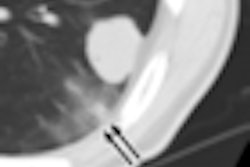
So far so good, but could volumetric-modulated arc therapy (VMAT) do even better? A retrospective planning study conducted at the British Columbia Cancer Agency in Vancouver, Canada, has revealed the pros and cons of making such a switch (International Journal of Radiation Oncology, Biology, Physics, published online June 29, 2009).
Richard Shaffer and colleagues replanned treatment for 10 patients with high-grade glioma in their head-to-head study, pitting a prototype VMAT algorithm against conventional coplanar seven-field IMRT.
A two-step approach was adopted for the planning process. At first, treatment planners concentrated on covering the target volume without violating certain constraints. These rules included avoiding dose hotspots and not exceeding maximum doses set for five "organs-at-risk." These initial plans were then adjusted so that mean dose to the organs-at-risk was reduced, but without compromising coverage to the target volume or breaching the planning constraints.
Analysis of the final plans showed little difference between the two delivery methods in terms of target coverage, conformality, and homogeneity. Mean dose to central organs-at-risk (brainstem and chiasm) was also similar on the VMAT and coplanar IMRT plans.
One noticeable difference was that the lateralized organs-at-risk (optic nerves, retinas, and lenses) all received a much lower mean dose on the VMAT plans. However, this reduction was achieved at the expense of an increase in dose to the normal brain. And reducing dose to the healthy brain is important to patients' quality of life after treatment, co-author Dr. Alan Nichol told medicalphysicsweb.
"One of the most distressing side effects of brain tumor radiotherapy is cognitive impairment," he said. "While brain tumors cause severe cognitive impairment and radiotherapy generally causes mild impairment, it is a result of radiation dose to the normal brain." Had planners not tried to minimize dose to the lateralized organs, then both the VMAT and IMRT plans would probably have been equivalent in terms of brain-sparing, Nichol said.
VMAT was the clear winner, as expected, when the number of monitor units and the speed of delivery were compared. On average, VMAT plans reduced monitor units by 54% and treatment times by 65%. "This significant reduction in treatment time would increase patients' comfort because they would spend less time immobilized ... and may allow more patients to be treated per day," the authors noted.
Non-coplanar delivery techniques, in which the couch and gantry are both rotated to allow beams to be directed at the target from multiple directions, were not included explicitly in the head-to-head study. However, it was suggested that this alternative approach to treatment delivery may offer advantages in terms of organ-sparing. Following installation of a RapidArc system (Varian Medical System, Palo Alto, CA) at the British Columbia Cancer Agency and its roll-out in glioma patients, this theory has been put to the test.
"While gaining experience with the RapidArc planning software, we have been simultaneously planning the cases with coplanar and, in some cases, non-coplanar IMRT," Nichol said. "Generally, we find that the RapidArc plans are superior or equivalent to the fixed-beam coplanar IMRT plans, but there have been a few glioma cases for which non-coplanar, fixed beam IMRT was superior."
By Paula Gould
Medicalphysicsweb contributing editor
September 18, 2009
Related Reading
VMAT bests IMRT for prostate cancer treatment time, August 24, 2009
VMAT provides same treatment as IMRT in half the time, October 31, 2008
© IOP Publishing Limited. Republished with permission from medicalphysicsweb, a community Web site covering fundamental research and emerging technologies in medical imaging and radiation therapy.



















